Editor of this issue: J.A.Račkauskas
Copyright © 1978 LITUANUS Foundation, Inc.

|
LITUANUS
LITHUANIAN QUARTERLY JOURNAL OF ARTS AND SCIENCES
Volume 24, No.2 - Summer 1978
Editor of this issue: J.A.Račkauskas ISSN 0024-5089
Copyright © 1978 LITUANUS Foundation, Inc. |

|
VIKTORAS PETRAVIČIUS: LITHUANIAN ARTIST OF NATURE AND LOVE
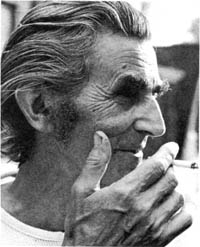
Never since the delightful graphic art of the primitive and anonymous artists of the eighteenth century, has Lithuanian art exhibited such a pure and candid interpretation of its national spirit, as in the early drawings of Viktoras Petravičius.
Petravičius is the central figure of Lithuanian graphic art of the 20th century. Isolated and born rebel, Petravičius has radiated his influence over his contemporaries and the whole generation of young artists in Lithuania and abroad. His influence is particularly acute in the post-war Soviet Lithuanian print makers.
Ever since he started, in the late twenties, he had two major obsessions: nature and love. It's not coincidental that both his main oeuvre as a young artist, were an "illustration" of a folk tale called "Marti iš jaujos" (1938), and, the latest monumental graphics (mostly monoprints) were erotic. Eroticism, at least in the early period, was deeply rooted in nature man and woman in a very expressionistic characterization becoming one with trees, animals, the sky and the earth.
Using the illustration technique of books of Rouault and Bracque, Petravičius created rather than illustrated his books and albums, completely deviated from any direct literary connotation. He neglected the literary text of a fairy tale by integrating parts of it between the drawing with complete disregard for spelling and marks of punctuation.
Even though he studied in Paris, lived in Germany and the United States, his art has the charm of naiveté and primitivism.
His work, since 1938, has evolved and changed many times. He now uses a different medium, his prints are large, and one of a kind. His early prints, reminiscent of African carving, such as the album printed in post war Germany, have given way to even greater emphasis to the naked innocence of the figure and elimination of the decorative elements.
While in Germany, Petravičius drew in the best expressionistic style, the tragedies of war, its aftermath, including the naked reality of hunger, sorrow, and devastation. In a spiritual simplicity he expressed the anguish that proved to be creative.
Stasys Goštautas
Boston University
VIKTORAS A. PETRAVIČIUS
Born 1906 in Lithuania. He is a graduate of the School of Fine Arts in Kaunas, Lithuania, 1935; also L'Ecole Nationals des Arts et Metier and L'Ecole Nationals Superieurdes Beaux Arts, Paris, 19 38. In 1937 he received the Grand Prix and the . Diplom membre du jury of the International Art Exhibition in Paris. Taught at the Kaunas Applied Arts Institute, Lithuania, 1940-1941; at the Vilnius Fine Arts Academy, Lithuania, 1941-1944. Since 1949 resides in Chicago, where teaches at his own Art Studio-Gallery.
He exhibited his work in Paris, France, 1937; Goetting, Germany, 1946; Amsterdam, Holland, 1949; Paris, France, 1949; Rome, Italy, 1949; the 55th Annual Exhibition at the Art Institute of Chicago, 1951, and received a prize for woodcut; the Rochester Memorial Art Gallery, 1953; Wilistead Gallery, Windsor, Canada, 1956; University of Colorado, Buolder, 1957; University of Illinois, Urbana, 1958; Riverside Museum, New York, 1958; Hyde Park Art Center, Chicago, 1958; International Institute, Milwaukee, 1958; 10th Annual Exhibit Sarasota Art Association at t he John and Ringling Museum of Art, 1960; Ravena, Italy, 1961; Gallery International, Cleveland, Ohio, 1966 (One-man show); "69" Art Gallery, Chicago, 1966 (One-man show).
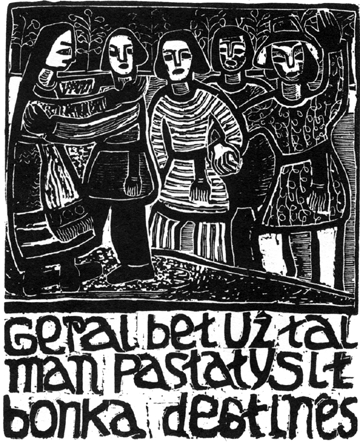
Illustration from the book Marti iš jaujos,
Lithuania, 1937. 'Reproduced in Viktoras Petravičius:
Gravures sur Bois Conte Populaire Lituanien. Kaunas, Lithuania:
Edition de ['Association Lituanienne d' Art et D'Action, E. Norkienė, 1940.
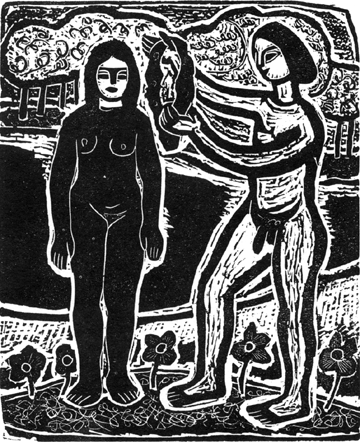
Illustration from Marti iš jaujos.
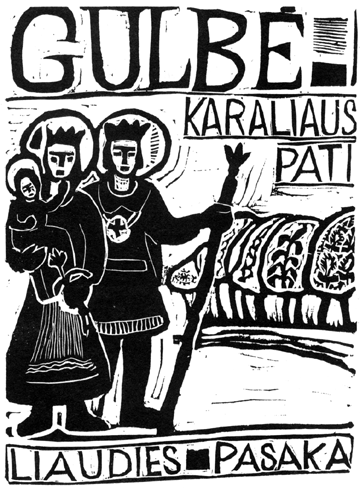
Title page of Gulbė karaliaus pati: liaudies pasaka
(The Swan, King's Wife, 1937). For this work Petravičius
was awarded the Grand Prix for graphic art at the
International Exhibit of Art and Technology in Paris, 1937.
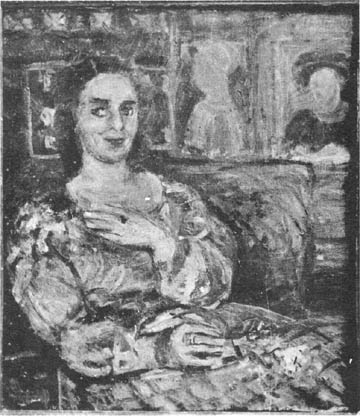
Portrait of My Wife. 1940. Oil.
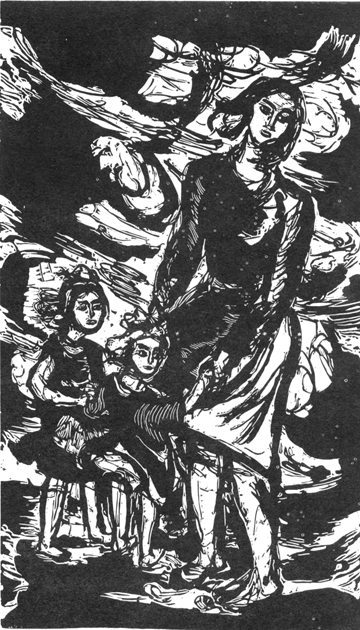
Audroje Stormbound. Linoleum Cut. Germany, 1948.
from Viktoras Petravičius: Lino raižiniai. Muenchen, Germany:
T. J. Vizgirda, 1949. A Collection of 28 linoleum cuts.
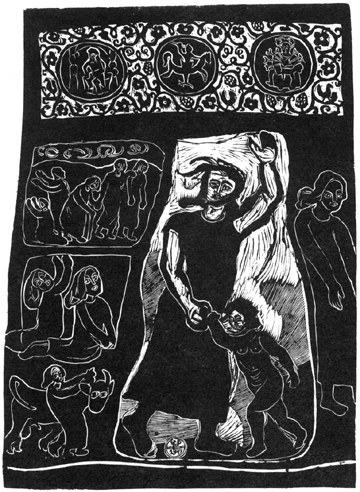
Svetimoje šalyje In a Foreign Country. Linoleum Cut. Germany, 1948.
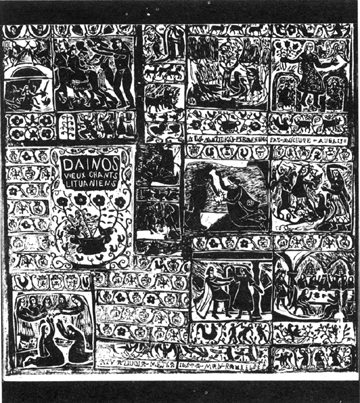
Dainos Songs, 1948. Black/White Wood Cut.
Photographs of works reproduced on p.39 through p. 50 were made by A'exas Urba.
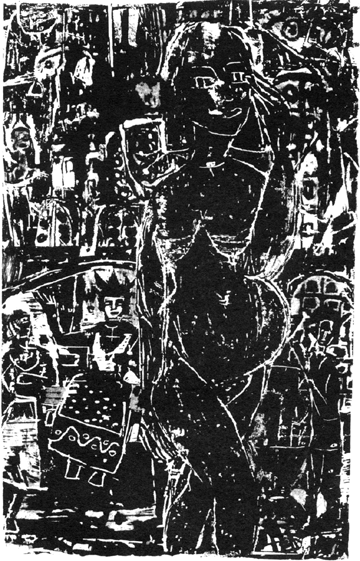
Motina Mother, 1970. Colored Print. Chicago.
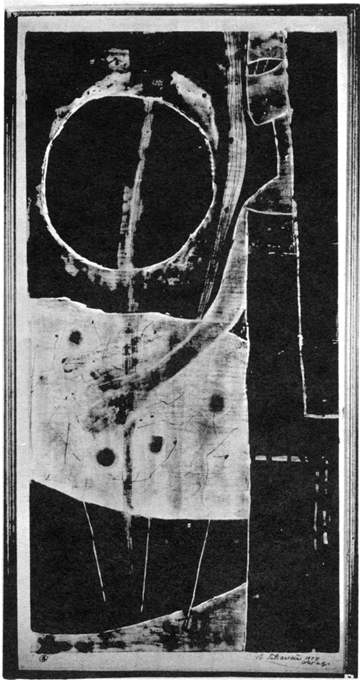
Saulės patekėjimas - Sun Rise, 1974 Black/White Wood Cut. Chicago.
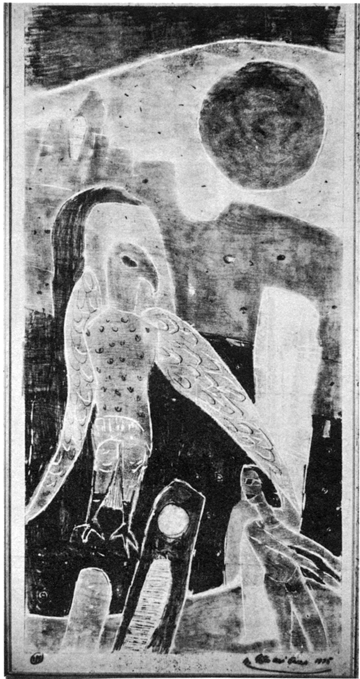
Aras Eagle, 1975. Black/While Wood Cut. Chicago.
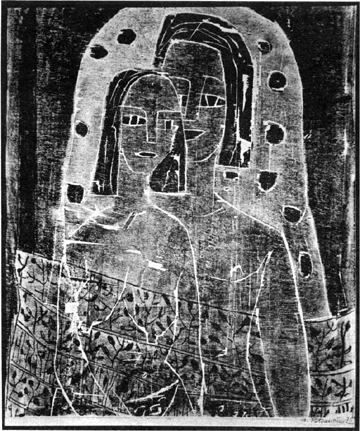
Sužadėtiniai Engaged, 1975. Black/While Wood Cut. Chicago.
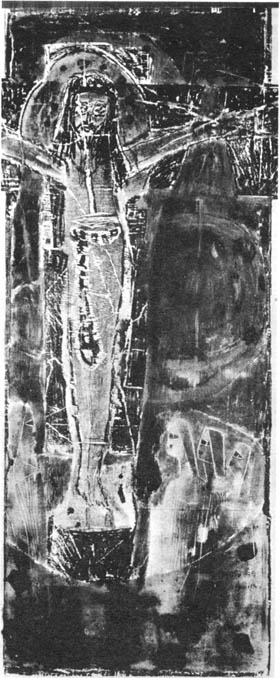
Nukryžiuota* - Crucified, 1975. Colored Wood Cut. Chicago.
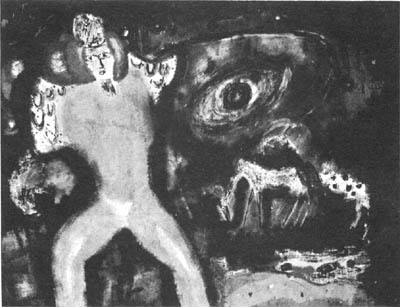
Karys audroje - Warrior in Storm, 1975. Chicago.
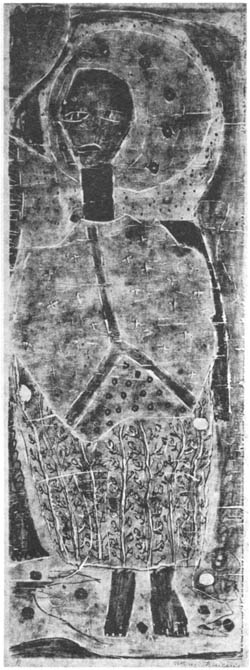
Pranašas Prophet, I976 Black/While Wood Cut. Chicago.
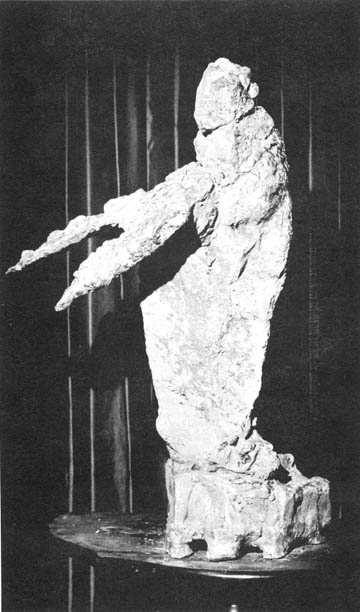
Aras Eagle, I977. Stone.
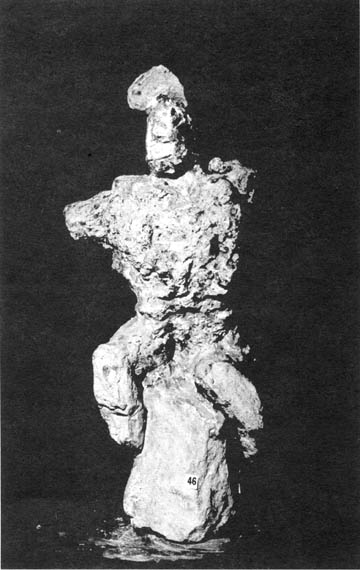
Jurgis George, 1973. Stone,
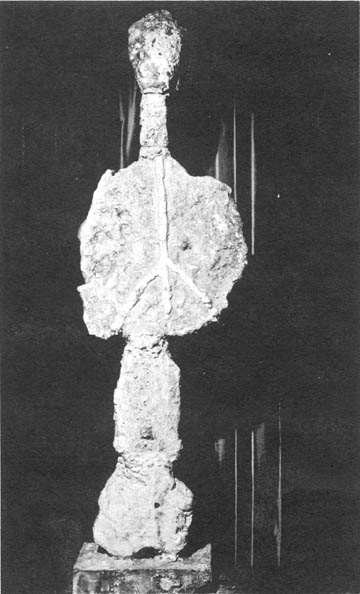
Taikos karalius - King of Peace, 1973. Stone.
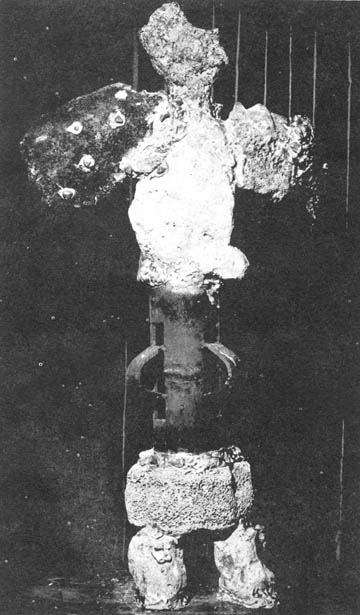
Skulptūra - Sculpture. 1975. Stone.
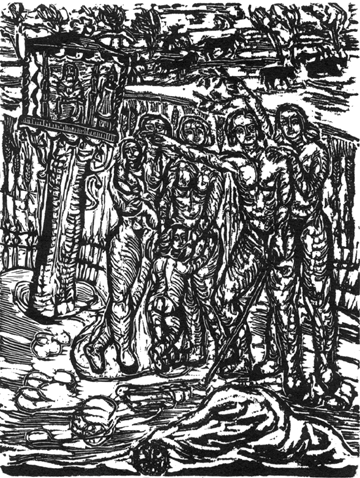
Laisvės kovotojai Fighters for Freedom. Linoleum Cut. Germany, 1948.